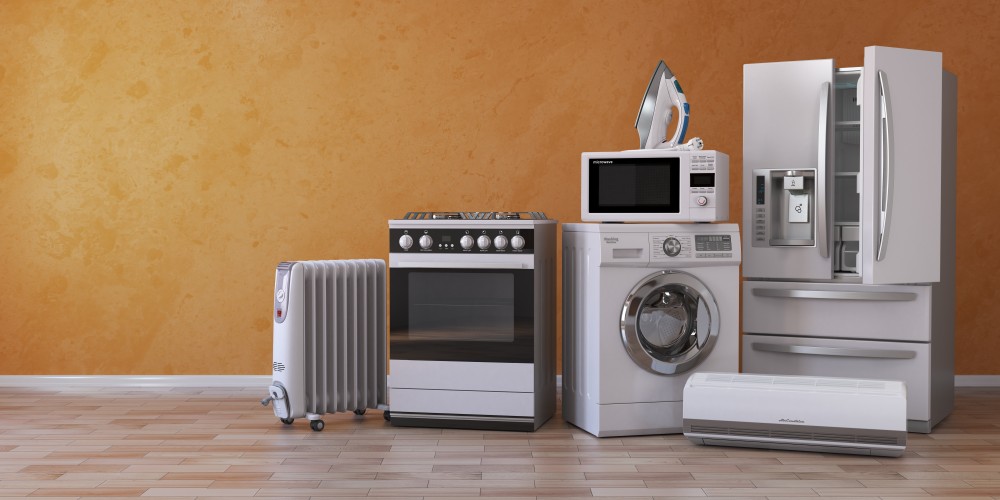Lifestyle
The Eco-Friendly Guide to Energy-Efficient Appliances: Tips for a Greener Home


In recent years, environmental sustainability has become a central concern for many and the concept of socially conscious consumerism has gained considerable ground. More and more, individuals are seeking ways to live in harmony with the planet and make lifestyle choices that reduce their ecological footprint. This shift towards eco-awareness isn’t just about what they consume, either, but also extends to how they live their daily lives—including the way they manage their households. Indeed, the drive to create greener living spaces is both a practical move in addition to a moral imperative because it often leads to both environmental and financial savings.
If you’re looking to greenify your home, energy conservation is one area in which you can make a significant impact with a relatively small amount of effort. In particular, you’ll want to focus on using home appliances in the most energy-efficient possible ways, as these items account for a substantial portion of domestic electricity consumption.
Rest assured that there are many ways to cut down energy usage without sacrificing any of the conveniences that modern home appliances offer. Here are just a few that you can readily implement:
Replace Old Appliances with Energy-Saving Models
If your home is still equipped with decades-old appliances, chances are they’re not as efficient as they could be. Older models usually consume far more electricity and water than newer models, which are specifically designed for energy efficiency.
If you have an old refrigerator running for years now, perhaps it’s time to buy side by side refrigerator with built-in power-saving technology. You can also switch out your dying washing machine for a newer model. While the initial investment may seem high, the long-term savings on energy bills and the environmental benefits make it a worthwhile consideration.
Conduct Regular Maintenance
Regular maintenance is crucial for keeping appliances running efficiently. Neglect can lead to less optimal performance and thus increased energy consumption, not to mention unexpected breakdowns. Simple tasks like cleaning the lint filter in your washing machine after every use, defrosting your freezer to prevent ice build-up, and checking the seals on your refrigerator doors can make a significant difference to these appliances’ functionality over the long term. For appliances like centralized HVAC systems and water heaters, consider professional servicing to ensure they’re operating at peak efficiency.
Unplug Appliances When Not in Use
Many electronic devices and appliances continue to draw a small amount of power even when turned off, a phenomenon known as “phantom load” or “standby power.” This can include everything from coffee makers and microwave ovens to phone chargers and television sets. By unplugging these items or using a power strip to turn off multiple devices at once, you can significantly reduce your home’s overall energy consumption. It’s a small habit change that can lead to noticeable savings on your electricity bill and a marked reduction in your household’s carbon footprint.
Wash Clothes in Cold Water
Heating water for washing machines accounts for a significant portion of the energy used in households. Switching to cold water can therefore save a considerable amount of energy with each load. It also results in better cleaning, as modern laundry detergents are designed to be effective at lower temperatures. In addition, washing in cold water is gentler on fabrics, so you help your clothes last longer and reduce the need for frequent replacements. Simply put, washing clothes in cold water not only conserves resources but also decreases the waste associated with disposing of worn-out garments.
Wash Full Loads Only
Maximizing the efficiency of washing machines and dishwashers is crucial for conserving water and energy; one simple way to achieve this is by only running full loads. This practice ensures that you’re making the most out of the water and energy consumed during each cycle. You’ll get to reduce the frequency of washes, conserve critical resources, and also extend the lifespan of your appliances by minimizing wear and tear.
Utilize Toaster Ovens or Microwaves for Small Meals
Your choice of cooking appliance can have a big impact on household energy consumption. If you’re prepping small meals or reheating leftovers, consider using a toaster oven, microwave, or even a slow cooker instead of your main oven. These appliances use significantly less energy to achieve the same task. A microwave, for example, can use up to 80% less energy than a conventional oven in many cases. Toaster ovens also offer a more energy-efficient option for baking or roasting small portions. In addition to saving energy, these appliances often heat food faster, which can save you time and make meal preparation more convenient.
Embracing eco-friendly practices when using home appliances is a simple yet powerful way to contribute to a more sustainable future. By incorporating these energy-saving tips into your daily routines, you can reduce your environmental impact and also inspire others to make their own small, mindful changes for the good of the planet. Together, these efforts underscore the importance of individual actions in the collective journey toward sustainability. (MCN)














